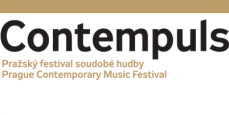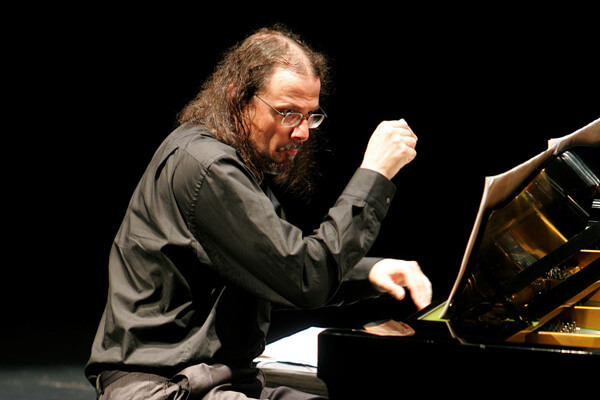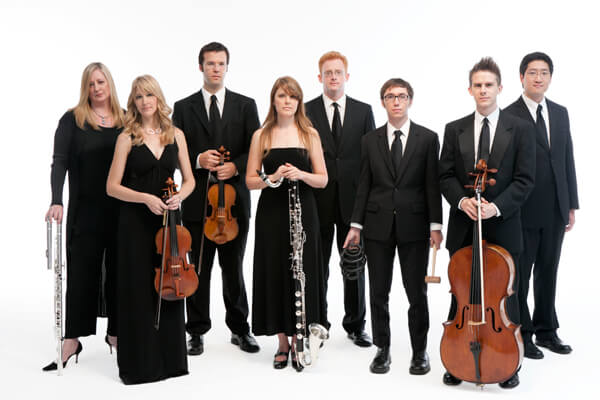 November 6, 2012, marked the opening of the Contempuls Contemporary Music Festival in Prague. In its fifth year, the festival has quickly grown into a popular part of the thriving Czech new music scene and showcases many composers and performers from around the world. Last Tuesday’s opening concert offered a doubleheader for concertgoers: pianist and composer Steffen Schleiermacher performed John Cage’s Music of Changes, followed by five pieces performed by Talea Ensemble.
November 6, 2012, marked the opening of the Contempuls Contemporary Music Festival in Prague. In its fifth year, the festival has quickly grown into a popular part of the thriving Czech new music scene and showcases many composers and performers from around the world. Last Tuesday’s opening concert offered a doubleheader for concertgoers: pianist and composer Steffen Schleiermacher performed John Cage’s Music of Changes, followed by five pieces performed by Talea Ensemble.

Pianist and Composer Steffen Schleiermacher (courtesy of www.schleiermacher-leipzig.de)
Schleiermacher’s interpretation of Cage’s Music of Changes was enthusiastic, the pianist quite animated during particular sections of the piece. The performance was engaging, and the technicality required to perform the piece was astounding to see live. Combined with Cage’s piece, Schleiermacher’s performance wowed the audience, who called him back for an encore, for which he played John Cage’s Music For Piano No. 67, a work that lasts all but 1 second. The light-hearted encore served as a perfect ending to the first of the night’s offerings.
After a short break, Talea Ensemble took to the stage to perform a set of five pieces all composed within the last 11 years. The first piece was Color Form Line II by Alex Mincek. The piece begins with a chord of roaming multiphonics in the woodwinds, culminating in a trilling motivic figure in the oboe and flute that soon grows out to the other instruments of the ensemble. As the piece progresses, a single melodic line emerges and is treated similarly to the melodic line in Jacob Druckman’s Aureole. Like Druckman’s piece, this single line is constantly moving through the instruments and creating the sense of a held sustain pedal applied to the whole ensemble. It is a remarkable effect that Mincek achieves quite well with such a small group.

Talea Ensemble. Photo credit: Beowulf Sheehan.
Following Mincek’s piece were two premieres: Eric Wubbel’s Tautology and Translation and Huck Hodge’s Tetzahuitl—two scenes from the Aztec book of omens. The pieces are similar in their orchestration and use of extended techniques, creating timbrally interesting blocks of sound. However, Wubbel’s piece felt a little unfocused. It begins with a slow imitation between instruments that eventually turn into a groove involving col legno ricochets, key clicks, and other extended techniques. The groove lasts for a period of time before turning into a slower section, then again returns to a quicker pace. While each individual section of the piece is well written and interesting to listen to, the connections between sections is a little incoherent. While the piece lacked focus, the performers were wonderful, playing with all the skill and passion that a composer could wish for in a premiere of their work.
Hodge’s piece, while sonically similar to Wubbel’s, felt much more put together. Everything feels connected and there is a logical arc to his piece. In addition, Hodge’s use of orchestration and color was fantastic to listen to. He was able to make the ensemble sound much larger than it was, creating a diverse dynamic plane that he exploited to great avail. Hodge also put the players to the test, writing complex parts that the performers were able to pull off with fantastic dexterity and skill (despite one mishap where the bow flew out of the cellist’s hand).
The remaining two pieces were Erin Gee’s Mouthpiece: Segment of the 4th Letter and Olga Neuwirth’s torsion: transparent variation. Perhaps the best part about Gee’s piece is the percussion writing, which is fantastic to listen to and a joy to see performed live. The percussionist is always moving, always on his feet and dancing to the rhythm Gee has written. However, this sense of movement is missing from the rest of the piece, which is rather static and subtle. As the piece progresses, it slowly feels as if the air is leaking out of it, and the light orchestration—especially in the strings—doesn’t help. Despite the shortcomings in the rest of the piece, the percussion writing is absolutely phenomenal.
Neuwirth’s piece marked an end to the three-and-a-half-hour marathon of music that served to kick off the Contempuls Festival. A concerto for bassoon with small ensemble (including electronic playback), Neuwirth’s piece was incredibly refreshing and felt the most different from the rest of the pieces on the program. The bassoon writing is incredible, and bassoonist Adrian Morejon’s virtuosic performance was unbelievable. This piece is something every conservatory bassoonist should study, as it is a wonderful contemporary bassoon concerto in a repertoire lacking material. Aside from the bassoon writing, the piece is very well put together and is thematically and motivically clear, even with the integration of the electronic playback that occurs while the ensemble is completely silent. Torsion marked a perfect ending to the evening.
The second half of the evening as a whole was very good, and Talea Ensemble performed each piece wonderfully. However, the programming felt a bit off. Many of the pieces felt very similar and there was not enough variation in terms of style and use of the instruments. That was one of the reasons Neuwirth’s piece was so refreshing, because she used the instrumentation in a way the other composers did not. Perhaps the monotony of the concert was a programming error, but it’s more likely it came from the two back-to-back premieres in the concert, which were very similar in their use of the ensemble and sound. Had the pieces performed by Talea Ensemble been switched around a bit more, the concert might have had a more natural flow.
Despite a few shortcomings, the concert was a great beginning to the 2012 Contempuls Festival. Masterful performances combined with skilled compositions made for a highly enjoyable evening of new music.
The Contempuls Contemporary Music Festival runs until the end of November in Prague, with performers and composers from North America and Europe participating: http://www.contempuls.cz.
–
Sam Reising is studying music composition at New York University. Follow him on Twitter: @samreising.





















